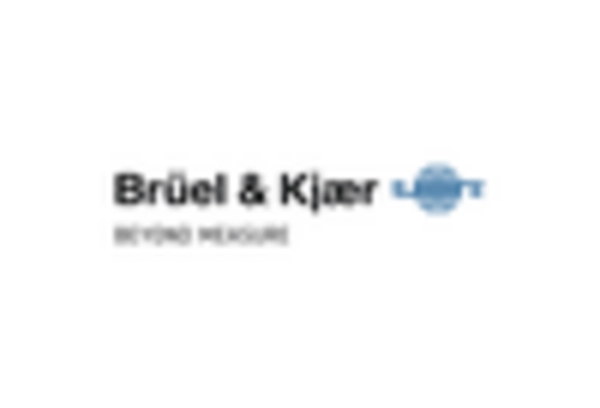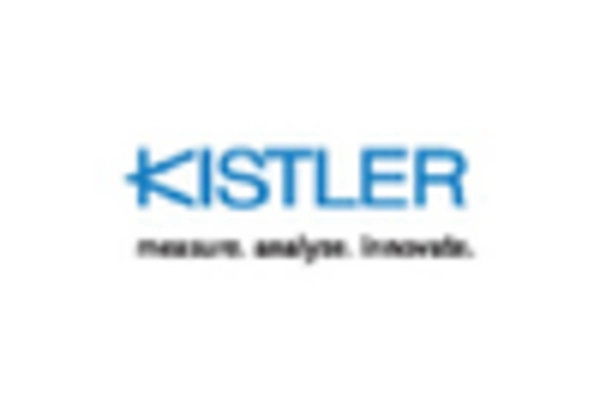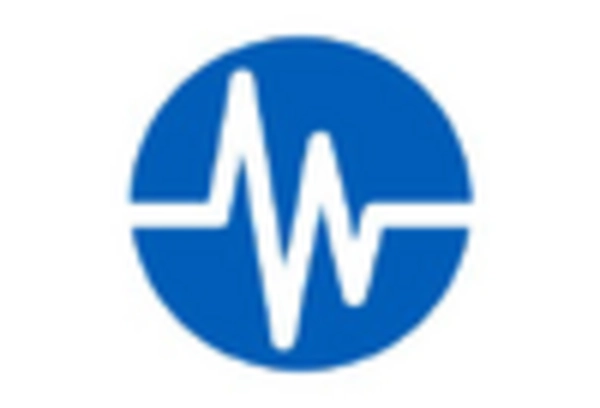Regulatory Standards and Compliance
The Noise, Vibration and Harshness Testing Market is significantly influenced by stringent regulatory standards aimed at minimizing noise pollution and ensuring product safety. Various regions have implemented regulations that mandate specific testing procedures for noise and vibration levels in products, particularly in the automotive and aerospace sectors. Compliance with these regulations not only enhances product quality but also mitigates legal risks for manufacturers. As regulations continue to evolve, the demand for comprehensive testing services is expected to rise, creating opportunities for market players to expand their offerings and cater to compliance needs.
Growing Demand for Automotive Testing
The automotive sector is a major driver of the Noise, Vibration and Harshness Testing Market, as manufacturers strive to enhance vehicle comfort and performance. With the increasing complexity of automotive designs, there is a heightened need for comprehensive testing to ensure compliance with consumer expectations and regulatory standards. The automotive testing segment is expected to account for over 40% of the market share by 2025, reflecting the industry's commitment to delivering high-quality vehicles. As electric and hybrid vehicles gain traction, the demand for specialized testing solutions tailored to these technologies is likely to further propel market growth.
Rising Consumer Awareness and Expectations
Consumer awareness regarding noise and vibration levels in products is on the rise, significantly impacting the Noise, Vibration and Harshness Testing Market. As customers become more discerning, manufacturers are compelled to prioritize the acoustic performance of their products. This shift is particularly evident in sectors such as consumer electronics and appliances, where noise levels can influence purchasing decisions. The market is projected to grow at a CAGR of 6% through 2027, driven by the increasing demand for quieter and more efficient products. Companies that invest in rigorous testing protocols are likely to gain a competitive edge in this evolving landscape.
Sustainability and Environmental Considerations
Sustainability is becoming a pivotal concern within the Noise, Vibration and Harshness Testing Market, as companies seek to reduce their environmental footprint. The push for eco-friendly products has led to an increased focus on testing methodologies that assess not only performance but also environmental impact. Manufacturers are now required to consider the lifecycle of their products, including noise and vibration emissions. This trend is likely to drive innovation in testing technologies, as companies strive to develop sustainable solutions that meet both consumer expectations and regulatory requirements. The market is anticipated to witness a shift towards greener testing practices, fostering growth in this segment.
Technological Advancements in Testing Equipment
The Noise, Vibration and Harshness Testing Market is experiencing a surge in technological advancements, particularly in testing equipment. Innovations such as real-time data acquisition systems and advanced simulation software are enhancing the accuracy and efficiency of testing processes. For instance, the integration of artificial intelligence and machine learning algorithms into testing methodologies allows for more precise analysis of noise and vibration patterns. This trend is likely to drive market growth, as manufacturers increasingly seek to improve product quality and performance. The market for testing equipment is projected to reach USD 1.5 billion by 2026, indicating a robust demand for advanced testing solutions that can meet the evolving needs of various industries.

















Leave a Comment